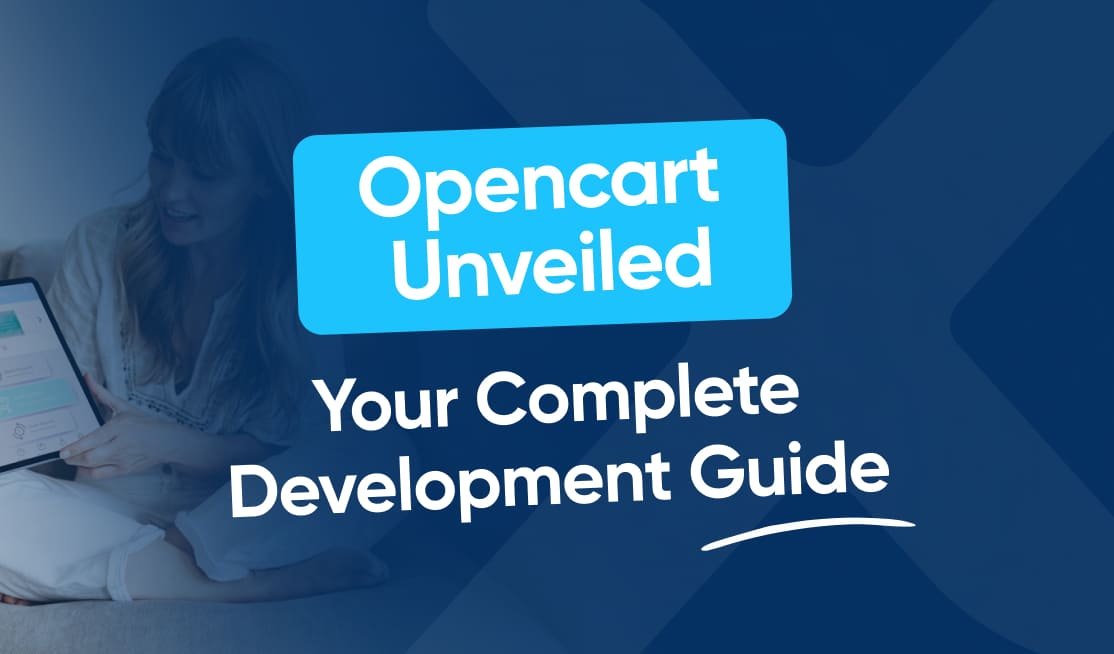
If you are looking to build your own e-commerce website, Opencart development is a powerful and versatile option to consider. Opencart is an open-source platform that allows you to create and manage your online store with ease. In this comprehensive guide, we will delve into everything you need to know about Opencart development to help you get started and make the most of this platform.
Understanding Opencart Development
Opencart development refers to the process of building and customizing an online store using the Opencart platform. Opencart is written in PHP and uses MySQL to store its database. It provides a user-friendly interface, making it an ideal choice for individuals and businesses of all sizes looking to set up and manage their own e-commerce websites.
What is Opencart Development?
Opencart development is a comprehensive approach to creating and enhancing online stores using the Opencart platform. With Opencart, developers have the flexibility to customize various aspects of the store, including the design, functionality, and user experience. By leveraging the power of PHP and MySQL, Opencart allows developers to build robust and scalable e-commerce websites that meet the unique needs of their clients.
Opencart development involves a range of tasks, such as:
- Installing and configuring the Opencart platform
- Designing and customizing the store’s theme and layout
- Integrating payment gateways and shipping methods
- Adding and managing products, categories, and inventory
- Implementing SEO strategies to improve search engine visibility
- Enhancing the store’s functionality with modules and extensions
- Optimizing the website’s performance and security
Opencart development requires a combination of technical expertise, creativity, and understanding of e-commerce best practices. It is a dynamic field that constantly evolves as new technologies and trends emerge in the e-commerce industry.
Benefits of Using Opencart for Your E-commerce Business
Opencart offers numerous advantages that make it a popular choice among e-commerce developers and business owners:
- Easy setup and installation: Opencart comes with a simple installation process, allowing you to quickly set up your online store and start selling products. Whether you are a beginner or an experienced developer, Opencart’s user-friendly interface makes the setup process a breeze.
- Flexible and customizable: Opencart provides a wide range of themes and templates, allowing you to create a unique and visually pleasing storefront. With its intuitive design editor, you can easily customize the layout, colors, fonts, and other design elements to match your brand identity. Additionally, Opencart offers a vast selection of modules and extensions to enhance the functionality of your store, such as integrating social media, implementing advanced search options, and adding customer reviews.
- SEO-friendly: Opencart has built-in SEO features, enabling you to optimize your website for search engines and improve its visibility in organic search results. You can easily customize meta tags, URLs, and other SEO elements to ensure that your products and categories rank higher in search engine rankings. Opencart also supports canonical URLs, sitemaps, and other SEO best practices to help you drive more organic traffic to your store.
- Scalable and secure: Opencart is designed to handle growing businesses. It provides a robust and secure platform that can handle large amounts of traffic and transactions. With Opencart, you can easily manage multiple stores from a single admin panel, making it a suitable choice for businesses with multiple brands or international operations. Opencart also offers various security features, such as SSL support, CAPTCHA verification, and data encryption, to protect your store and customer data from unauthorized access.
By leveraging the benefits of Opencart, you can create a professional and feature-rich online store that attracts customers, drives sales, and helps your business grow.
Getting Started with Opencart
Welcome to the world of Opencart, a powerful and versatile e-commerce platform that allows you to create and manage your online store with ease. In this guide, we will walk you through the process of installing Opencart and setting up your store to get you started on your journey towards online success.
Installing Opencart
The first step in Opencart development is installing the platform on your web server. This ensures that your store is accessible to your customers and allows you to take advantage of all the features and functionalities that Opencart has to offer.
Before you begin the installation process, it is important to ensure that your server meets the minimum system requirements specified by Opencart. This includes having a compatible version of PHP, a supported database system, and sufficient disk space.
Once you have confirmed that your server meets the requirements, you can proceed with the installation process. This involves downloading the Opencart package from the official website and uploading it to your server. You can use an FTP client or the file manager provided by your hosting provider to transfer the files.
After the files have been uploaded, you can access the Opencart installation wizard by visiting the URL where you uploaded the files. The wizard will guide you through the necessary steps, including creating a database, setting up an administrator account, and configuring basic store settings.
Once you have completed the installation process, you will have a fully functional Opencart store ready to be customized and populated with products.
Setting Up Your Opencart Store
After successfully installing Opencart, you can begin setting up your online store. This involves configuring essential settings that will define the look and functionality of your store.
One of the first things you will want to do is customize your store’s appearance. Opencart provides a range of themes and templates that you can choose from to give your store a unique and professional look. You can also customize the colors, fonts, and layout to match your brand identity.
Next, you will need to set up your store’s basic information, such as the store name, logo, and contact details. This information will be displayed to your customers and is essential for building trust and credibility.
In addition to the visual aspects, you will also need to configure the functional aspects of your store. This includes setting up payment gateways to enable your customers to make secure online payments, configuring shipping methods to determine how your products will be delivered to your customers, and defining tax rates to ensure that you comply with local tax regulations.
Opencart provides a user-friendly administration panel where you can easily manage these settings and customize them according to your business requirements. You can also install extensions and modules to add additional features and functionalities to your store, such as social media integration, advanced analytics, and marketing tools.
By taking the time to properly set up your Opencart store, you can create a professional and user-friendly online shopping experience for your customers, increase your sales, and grow your business.
Opencart Modules and Extensions
Exploring the Core Modules
Opencart comes equipped with a range of core modules that provide essential functionality for your online store. These modules include features such as a product catalog, shopping cart, customer management, order processing, and more. You can customize these modules to suit your specific needs and preferences.
Utilizing Extensions for Enhanced Functionality
In addition to the core modules, Opencart offers a vast library of extensions. These extensions allow you to extend the functionality of your online store. Whether you need advanced analytics, multi-language support, or integration with popular third-party services, there is likely an extension available to meet your requirements. You can easily browse and install extensions directly from the Opencart marketplace.
Customizing Your Opencart Store
Theme Customization in Opencart
One of the key advantages of Opencart is its ability to customize the look and feel of your online store. Opencart offers a wide range of themes and templates that you can choose from to create a visually appealing storefront. You can customize these themes further by modifying colors, fonts, layouts, and more to reflect your brand identity.
Adding and Managing Products
Your online store’s success depends on the products you offer. Opencart provides a user-friendly product management system that allows you to easily add and manage your products. You can categorize your products, set pricing and inventory levels, create product descriptions, and upload product images. Opencart also supports options for product attributes, allowing you to provide customizable options for your customers.
Advanced Opencart Development Techniques
SEO Optimization in Opencart
To increase your online store’s visibility in search engines, it is crucial to optimize your Opencart website for SEO. Opencart provides various SEO-friendly features, such as customizable URLs, meta tags, and XML sitemaps. By optimizing these elements and implementing best practices, you can improve your website’s ranking in search engine results and attract more organic traffic.
Security Measures for Your Opencart Store
Security is of utmost importance when running an e-commerce website. Opencart takes security seriously and provides measures to protect your online store from vulnerabilities and attacks. You can strengthen security by implementing SSL certificates, regularly updating Opencart to the latest version, using secure hosting, and following best practices for user account management.
With this comprehensive guide to Opencart development, you now have a solid foundation to embark on your e-commerce journey. Whether you’re a beginner or an experienced developer, Opencart offers the tools and flexibility you need to create a successful online store. Start exploring the possibilities and unleash the potential of Opencart for your e-commerce business.


